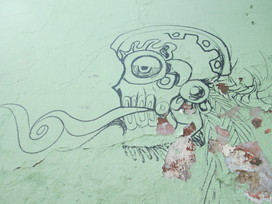 Calavera graffiti in Oaxaca, Mexico Calavera graffiti in Oaxaca, Mexico WHAT'S A CALAVERA, YOU ASK? Autumn has begun and the most celebrated and festive (and my favorite) Mexican holiday, Dia de Los Muertos, The Day of the Dead (celebrated on November 1st and 2nd) is right around the corner. Now is the season when you’ll see a lot of calaveras, so I figured it’s a good time to take a look at them and to see them in their beauty and history. So, what is a calavera anyway? First off, calavera is the Spanish word for skull, but the significance of calaveras has a much richer meaning in Mexican culture. You see them all around Mexico, in drawings and carvings in Pre-Hispanic Aztec and Mayan ruins to modern day graffiti, clothing, jewelry and tattoos. Although you can see calaveras throughout the year in Mexico, you most often see them during the season of Los Dias de Los Muertos. Calaveras remind us to celebrate our lives and mortality, to look at the past and future, all the while being present. They are a way for us to appreciate and to acknowledge that life is sacred, but death, "La Muerte", is another rite of passage in our lives, no less sacred than life itself. Death, too, is alive. The inevitable is not to be feared or avoided; it is to be embraced and danced. More than anything else, calaveras remind us to live each moment to its fullest, to face one’s mortality with a smile and with courage, and to trust in the immortality of an afterlife. When you say “calavera” in Mexico, you may be referring to one of three things. For starters, you’ll find (and eat) a lot of calaveras during Los Dias de Los Muertos! That’s right, you’ll eat them! The first types of calaveras are candies made into the shapes of skulls. They were originally made out of white sugar. Now you will find calavera candies made from amaranth, chocolate or anything else sweet. They were traditionally decorated with a person’s name and then given to that person as a way to appreciate him or her. These sweet calaveras are also presented as an offering on the altar of a deceased. It’s a delicious treat for the sweet-toothed, for the living and spirited. The second type of calavera is a humorous poem that tells a story. It jokes about living or deceased politicians, famous people, or loved ones while poking fun at death. These popular verses are recited on and around Los Dias de Los Muertos. Write calaveras for your favorite buddies to show how much you love them! Be sure to include La Muerte! 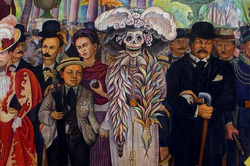 By Diego Rivera By Diego Rivera The most general meaning of calavera is any type of art or pop culture that uses skulls, "La Catrina" or skeletons as a form of expression. As you know, you’ll see calaveras everywhere around Mexico. I was walking to my house yesterday, thinking about writing this article on calaveras, when I spotted two within a two block span. One was graffiti art and the other was a skull on a passerby’s shirt. I know that skulls are popular in mainstream culture right now, but they’re particularly prevalent in Mexico. Ancient crystal skulls made from jade and quartz have been found in Mexico and Central America. Were they ancient forms of art, used for religious ceremonies or for other purposes? I suppose that’s for archeologists, anthropologists, and native Elders to determine. Even the most notable twentieth century Mexican artist, Diego Rivera, after being inspired by the "La Catrina" of cartoonist, Jose Guadalupe Posada, portrayed catrina calaveras in his own work. You’ll see famous people such as current day president, Enrique Peña Nieto, or legendary and iconic, Emiliano Zapata depicted in caricature calaveras. Modern day artists give tribute to great calaveras, too. Pedro Robledo, at Pachamama Native Art makes beaded skull earrings and bracelets and soon to come - rings. You can also find elaborately decorated Huichol style beaded, wooden, and ceramic skulls in many souvenir shops all around Mexico. Calaveras are and have always been embedded in the fabric of Mexican culture. To remove them would be to uproot and displace a culture. They are THAT important.  Now that the afternoon shadows of fall are casting longer, you’ll see more calaveras poking their heads out of shop windows, on the streets, and in the melodies of the season. Do not be afraid! When you see (or hear) calaveras, it’s a reminder to live in the moment. Yes, calaveras are telling us that we will (or maybe already have) pass on from this life at anytime. We are mortal and death can catch us when we least expect; this we know. But, it’s a more complex paradox than that. If you see political caricature calaveras, you can appreciate that the politician being represented will not reign forever; he and his character will pass. Or in the case of Zapata, his ideals will stay forever, immortalized in the living spirit of calaveras. It's life and death all at once. Since the empire days of the Aztecs, to the current growing pains of a developing country, Mexicans are no strangers to loss, tragedy and hurt. However, they know it is fleeting in the larger picture, yet forever remains etched in time. The calavera remains. It gives us an opportunity to dance and sing now, side by side with death. It points out that every moment is sacred. It gives us faith in spirit and life beyond this one. Smile and laugh now. Enjoy the present. In life, we triumph; in death we live. Forever alive. Vivan las calaveras!
6 Comments
|
Author
Co-owner of Pachamama Native Art, Inc. and writer of this blog. Archives
May 2016
Categories
All
|
Proudly powered by Weebly

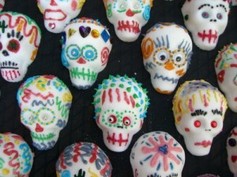
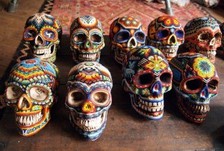
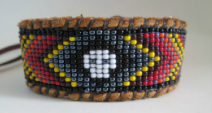
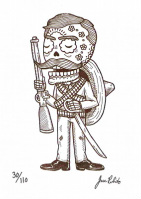

 RSS Feed
RSS Feed